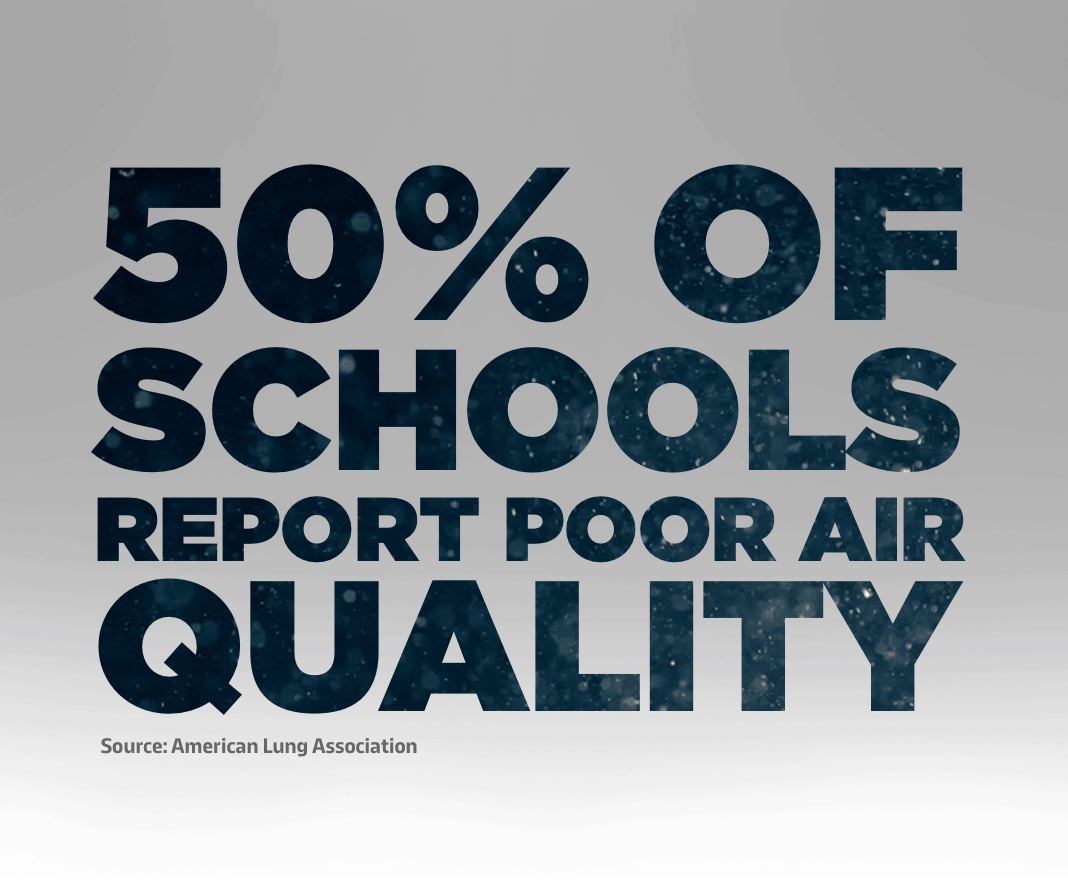Raise your IQ on IAQ: Understanding Indoor Air Quality

06/06/2024
Indoor air quality (IAQ) is a critical component of our daily health and well-being, yet it's often an aspect of our environment we overlook. Given that the average person spends about 90 percent of their time indoors (EPA), the significance of maintaining clean air in our homes, schools, and workplaces is more important than ever.
Indoor Air Pollution
Indoor air pollution can be a stealthy health hazard, with the EPA finding that indoor air can be 2-5 times more polluted than outdoor air.
Common culprits contributing to indoor air pollution include:
- Dust, pollen and pet dander
- Volatile organic compounds (VOCs) found in paints, building products, appliances and cleaning products
- Carbon monoxide from cooking, candles, fireplaces, or tobacco
- Mold and mildew

Health Impacts from Indoor Air Pollution
These pollutants can lead to a range of short-term and long-term health issues. Children, seniors, and people with asthma and allergies are particularly vulnerable. The National Institutes of Health (NIH) reports that 50 percent of all illnesses are aggravated or caused by polluted indoor air. Conditions such as asthma, which affects 1 in 12 people (Asthma and Allergy Foundation of America), are notably worsened by poor IAQ. Health implications span immediate discomfort, including headaches, dizziness and fatigue, to potentially long-term health problems including respiratory diseases, heart disease and cancer (EPA). Some people even experience “sick building syndrome,” a set of symptoms that can include headache, sore throat and nausea.

IAQ in Schools and Workplaces
The impact of IAQ is not confined to homes but extends into our workplaces and schools as well. Poor indoor air quality has been found to interfere with workers’ productivity and is linked to lower grades for students. Schools face significant challenges with IAQ, with 50 percent of schools struggling with Indoor Air Quality problems (American Lung Association). Poor indoor air quality contributes to higher rates of absenteeism, decreases in students' ability to concentrate, and overall drop in academic performance (EPA). Asthma, exacerbated by poor indoor air, is the leading cause of chronic illness that keeps students away from school (NIH), underscoring the urgent need to improve IAQ in educational environments.

How to Improve IAQ
Improving IAQ is a multifaceted challenge that requires awareness, education and action. By understanding the sources and effects of indoor air pollution, we can take steps to mitigate its impact. This includes strategies such as:
Regular cleaning to reduce dust, pollen and pet dander, but avoid harsh cleaners like bleach.
- Opt for products that emit low levels of VOCs. Look for products that are GREENGUARD certified and CERTIFIED asthma & allergy friendly® like Knauf Performance+TM Insulation.
- Ensure adequate ventilation.
- Maintain a clean, dry environment to prevent mold growth. Keep humidity between a healthy range of 40-50% If you live in a wet climate, you may need a dehumidifier to keep mold at bay.
Raising our IQ on IAQ means making informed decisions that enhance our indoor environments, leading to healthier, happier and more productive lives for everyone.
